This xBmt was completed by a member of The Brü Club as a part of The Brü Club xBmt Series in collaboration with Brülosophy. While members who choose to participate in this series generally take inspiration from Brülosophy, the bulk of design, writing, and editing is handled by members unless otherwise specified. Articles featured on Brulosophy.com are selected by The Brü Club leadership prior to being submitted for publication. Visit The Brü Club website for more information on this series.
Authors: Chris Cook & Marshall Schott
Ask any brewer what the most important aspect of producing consistently high quality beer is, and one of the most common responses is guaranteed to be pitching an adequate amount of yeast. While once can achieve the proper viability by simply pitching multiple pouches of yeast, a more cost-effective method involves propagation of yeast in a starter, which these days appears to have become the norm.
The purported benefits of pitching highly viable yeast are many– quicker starts, faster finishes, and reduced risk of undesirable off-flavors. Since the only real downside is that making a starter takes about 20 minutes, it makes sense that so many people have adopted the practice, plus it can cost quite a bit less than purchasing multiple pitches of yeast.
However, there are those who question the necessity of making yeast starters, whether due to positive anecdotal experiences with direct pitching straight from the pouch or previous exBEERiments that failed to support the practice as qualitatively beneficial. It was this conundrum that inspired The Brü Club member, Chris Cook, to retest this variable using a yeast strain some believe is more sensitive to pitch rate!
| PURPOSE |
To evaluate the differences between a beer pitched with yeast direct from the package and the same beer where the yeast was propagated in a starter prior to being pitched.
| METHODS |
After receiving several requests from friends to brew a beer that tastes like Yuengling, I eventually caved, searched the internet for a clone of this classic American lager, and went with the highest rated recipe I could find. The beer ended up being a dark-copper banana bomb, which is odd seeing as it was fermented with a popular Chico yeast strain. Regardless, the keg was quickly kicked and requests for more came pouring in. I’ve made it a few times since and was curious to see how it’d turn out using Imperial Yeast A04 Barbarian.
Banana Hammock
Recipe Details
| Batch Size | Boil Time | IBU | SRM | Est. OG | Est. FG | ABV |
|---|---|---|---|---|---|---|
| 5.5 gal | 60 min | 30.0 IBUs | 11.4 SRM | 1.054 | 1.010 | 5.8 % |
| Actuals | 1.054 | 1.016 | 5.0 % | |||
Fermentables
| Name | Amount | % |
|---|---|---|
| Pale Malt (2 Row) US | 8.625 lbs | 70.41 |
| Caravienne Malt | 2 lbs | 16.33 |
| Munich Malt, Germany (Avangard) | 1.125 lbs | 9.18 |
| Caramel Malt - 120L (Briess) | 8 oz | 4.08 |
Hops
| Name | Amount | Time | Use | Form | Alpha % |
|---|---|---|---|---|---|
| Centennial | 22 g | 60 min | Boil | Pellet | 10.6 |
| Cluster | 22 g | 5 min | Boil | Pellet | 7.8 |
Yeast
| Name | Lab | Attenuation | Temperature |
|---|---|---|---|
| Barbarian (A04) | Imperial Yeast | 74% | 62°F - 70°F |
Download
| Download this recipe's BeerXML file |
Due to yeast age and batch size, BeerSmith predicted the pouch of Barbarian yeast contained 111 billion viable cells, which was about half of the recommended pitch rate of 223.3 billion cells. Per the yeast starter calculator, a 2 liter starter would result in 223.2 billion cells, just shy of ideal, which would have to do seeing as Chris’ flask was at its limit. When brew day came around, Chris started off by weighing out and milling the grain.
Following a 90 minute single-infusion mash at 147°F/64°C, a fly sparge was performed until the proper pre-boil volume was collected.
The full volume of wort was then boiled for 60 minutes with kettle hops were added at the times listed in the recipe.
Once the boil was complete, Chris took a refractometer reading showing the wort was at 1.054 OG. Seeing as his brewing area had yet to be plumbed, he was unable to use his chiller and resorted to a fairly unconventional method– after allowing the wort to chill in the kettle for a bit, he split it evenly between identical fermentation buckets and placed them outside in the frigid cold to finish chilling. Later that evening, he moved the worts to his basement and let the temperature stabilize overnight. The next day, he returned to pitch the yeast, one receiving the contents of a single pouch while the other was hit with a starter.
The beers were left to ferment in Chris’ cool basement that averaged an ambient temperature of about 63°F/17°C. After 2 weeks, signs of activity had slowed down so he took hydrometer measurements showing the direct pitch beer had a slightly higher SG than the beer pitched with a starter.
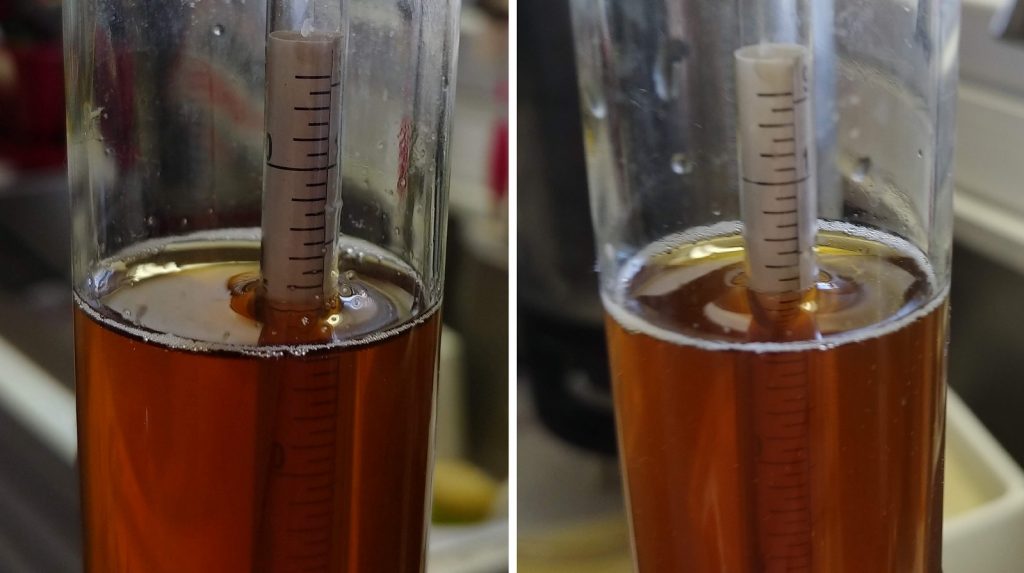
Since the beers were fermented in opaque buckets, Chris was unable to observe actual fermentation activity, but the difference in SG suggested the yeast starter did hasten the process. He also noticed a difference in the kräusen rings between the buckets.
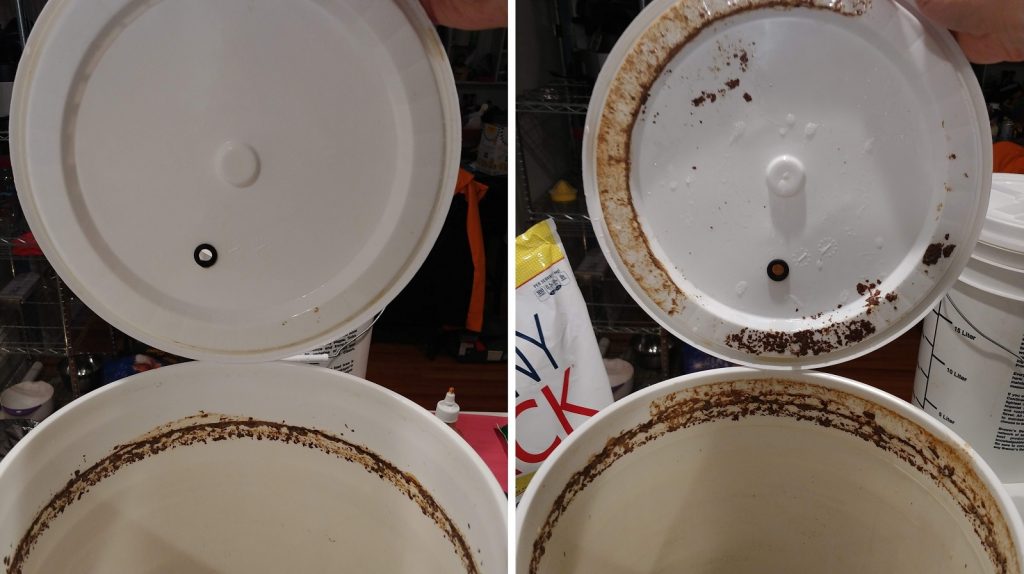
The beers sat for another week before Chris took a second set of hydrometer measurements showing both had settled at the same 1.014 FG. At this point, the beers were kegged, carbonated, and allowed to condition for a few days before they were served to participants.

| RESULTS |
A total of 21 people of varying levels of experience participated in this xBmt. Each participant was served 1 sample of the direct pitch beer and 2 samples of the beer made with a yeast starter in opaque cups marked either A, B, or C then asked to identify the unique sample. A total of 12 tasters (p<0.05) would have had to accurately identify the unique sample in order to reach statistical significance, though only 8 did (p=0.40), indicating participants in this xBmt were unable to reliably distinguish an Amber Ale fermented with yeast pitched directly from the same beer pitched with an adequately sized yeast starter.
Chris’ Impressions: Initially, Chris reported perceiving the direct pitch and yeast starter beers as being largely similar, though he felt the latter was slightly less astringent and a bit more sweet than the former. Despite their similarities, Chris said he was able to identify the odd-beer-out in the 3 triangle tests he attempted, though acknowledged he had no preference and likely wouldn’t be able to tell the difference if someone swapped pints.
| DISCUSSION |
There’s little doubt yeast viability is an important factor in the production of quality beer, with many crediting the adoption of yeast starters as a change that led to the biggest improvement in their finished product. Underpitching is known to increase the risk of off-flavor development, which can be avoided by pitching an adequate amount of cells.
Interestingly, tasters in this xBmt could not reliably identify a beer fermented with a single pouch of yeast from one pitched with a starter, suggesting underpitching had little impact on beer quality. These findings corroborate those from quite a few past xBmts on pitch rate, leaving one to question the veracity of claims that underpitching is universally detrimental to beer, though there is some evidence that overpitching has a perceptible impact.
When it comes to brewing consistently great beer, there’s nothing wrong at all with employing methods to reduce the risk of problems. While these and past results may not glaringly demonstrate the ills of underpitching, there’s little doubt that pitching yeast of high viability increases the chances of a positive outcome, and vice versa. It’d be a misconception to interpret these results as a recommendation to ignore pitch rates, though in a situation where one has a relatively fresh pack of yeast, pitching directly may not be something to fret too much over.
 Chris Cook is a Certified Beer Server living in Louisville, KY. Chris is an active member of The Brü Club where he enjoys engaging with other science-minder brewers. In addition to brewing, Chris loves being active with his girlfriend, daughter, and crazy-dog Nitro. When he’s not brewing something up in his homebrewery, Chris can be found doing triathlons, mud runs, obstacle races, or writing code. Follow Chris on UnTappd.
Chris Cook is a Certified Beer Server living in Louisville, KY. Chris is an active member of The Brü Club where he enjoys engaging with other science-minder brewers. In addition to brewing, Chris loves being active with his girlfriend, daughter, and crazy-dog Nitro. When he’s not brewing something up in his homebrewery, Chris can be found doing triathlons, mud runs, obstacle races, or writing code. Follow Chris on UnTappd.
Would you like to have your experiment featured on Brulosophy.com? Join The Brü Club today! The Brü Club is a growing community of curious homebrewers who regularly engage each other on topics important to us all. Membership is free and comes with all sorts of cool opportunities. Learn more at TheBruClub.com!
If you have any thoughts about this xBmt, please do not hesitate to share in the comments section below!
Support Brülosophy In Style!
All designs are available in various colors and sizes on Amazon!
Follow Brülosophy on:
FACEBOOK | TWITTER | INSTAGRAM
If you enjoy this stuff and feel compelled to support Brulosophy.com, please check out the Support page for details on how you can very easily do so. Thanks!

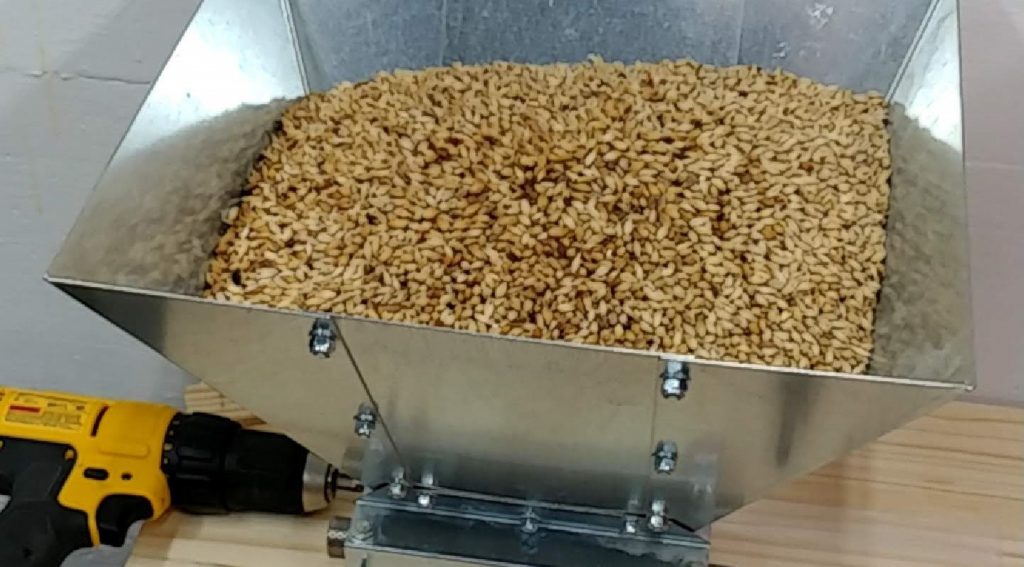
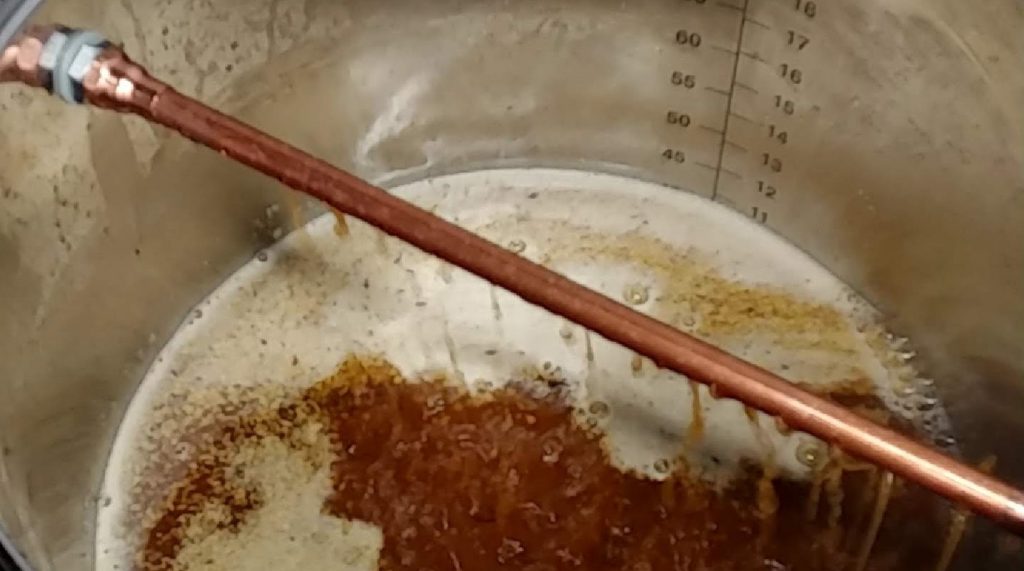
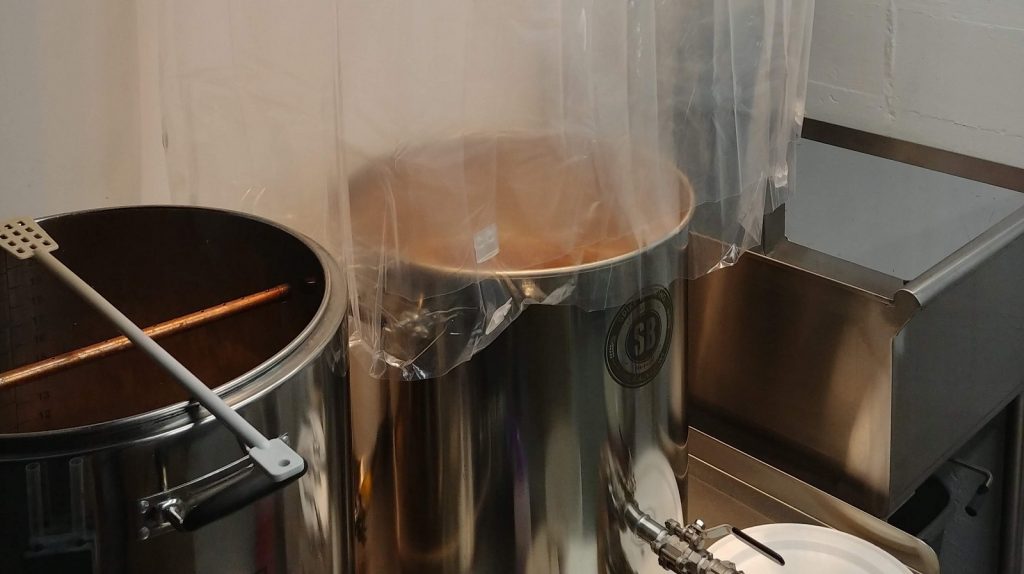
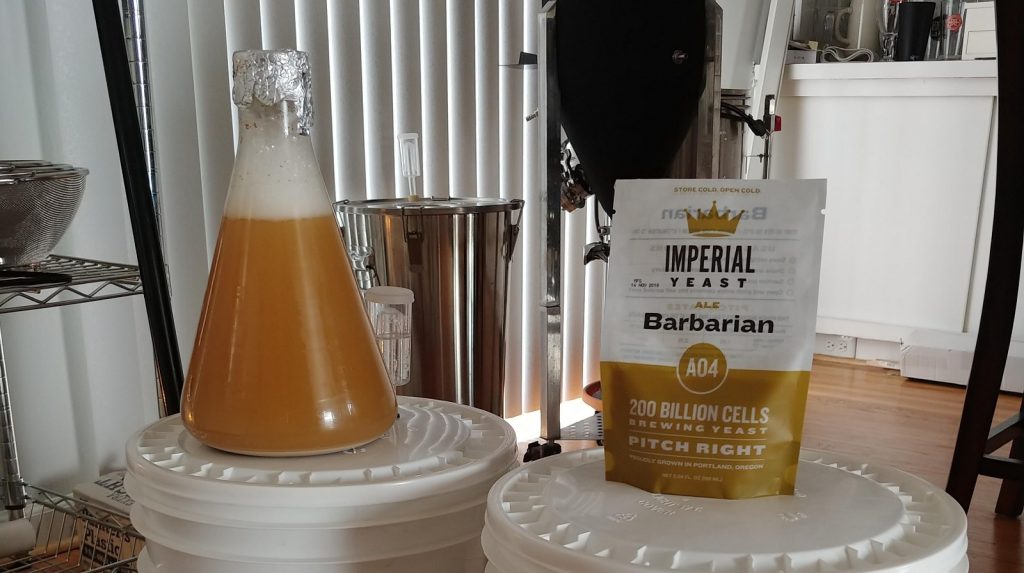










27 thoughts on “The Brü Club xBmt Series | Yeast Pitch Rate: Direct Pitch vs. Yeast Starter In An Amber Ale”
Pitch rate can certainly affect how yeast interact with hops :
http://convention2018.ibdasiapac.com.au/wp-content/uploads/2018/08/1330-Graham-Eyres-Lapel.pdf#page=17
I’ll just repeat what I’ve said on previous exbeeriments on starters, which is that if the entire starter was pitched, and assuming it was made with a full pouch of Babarian yeast, then both batches began with a cell count of 111 billion cells and had the same pitch rate. There’s no reason to believe the resulting beers should be different, except that one fermentation began in a smaller container (the flask) and included 2 litres of starter wort that may have been slightly different from the main wort. I’m still not convinced that making a starter actually has any rational purpose, besides perhaps allowing the yeast the “own” the wort more quickly and so exclude wild yeast from getting a toehold (though cell count of any wild yeast is probably so small relative to the pitched yeast as to be negligible). I’ll continue skipping making a starter for now…
How does a 2 litre starter end up with the same cell count as a pouch? Are you saying yeast doesn’t propagate in beer?
The pouch was not super fresh, so BS3 calculated a lower viability. I did not verify cell count with stains, since most homebrewers aren’t going to do that anyway.
Pitch rate is measured as the number of cells per mL. The starter does not have the same pitch rate as the beer. Also, the og of the starter may be lower.
Ben – why do you claim that a direct pitch and a starter yield the same cell count (111 billion)?
I’m guessing some volumes here, but the principle stands:
Batch one: 111 billion cells pitched into 21 litres of wort.
Batch two: 111 billion cells pitched into 2 litres of wort, which is later pitched into 19 litres of wort.
Both start with the same cell count, and the growth curve is the identical.
The traditional justification for making a starter is that you omit the growth phase, when yeast cells are multiplying rapidly to colonize the wort and producing lots of esters as they do so. Pitching a healthy starter, it is claimed, skips the growth phase and gives a cleaner beer. The problem with this theory is that the growth phase does happen, but in the starter flask. Any unwanted growth esters are pitched right into the main wort along with the yeast, making the whole pointless. You need to decant the starter wort (supernatant) off the starter yeast to get the benefit.
There is a valid argument that making a starter enables the yeast to “own” the wort more quickly and prevent unwanted microbes establishing, but I think the relative number of wild yeast/bacteria to cells pitched from a pouch makes that risk negligible. So in my opinion, starters really are pointless.
Ben – i’m not disputing the worthwhileness of a starter, but i’m not getting what you’re laying down with regards to cell count. To me, I do starters a week ahead of time since i decant, and i thought the traditional justification of a start is to grow cell count. Therefore, my comparison isn’t:
111B into 21L vs
111B into 2L, then added to 19L
but is:
111B into 21L vs
111B into 2L, then decanted and added to 21L
So there HAS to be growth from the 111B into 2L step, and thus the cell count HAS to be larger than the straight pouch pitch.
Are you discarding the supernatant and just pitching the yeast, or are you pitching the supernatant too? If you’re pitching the supernatant, you haven’t really made a starter. You’ve fermented pitched beer into the wort, not a starter.
Yeah, I’m chilling then discarding the supernatant – I just figured everyone does when they do a starter this way. I mean, that’s the point of doing a starter well in advance like this, right?
But even if I DID pitch the supernatant into the same amount of wort (21L for example), I’d still be pitching more yeast than if I had just opened a pouch of 111B and pitched that.
ugh, clumsy typing, I should have written “you’ve pitched fermented beer”…
If you’re discarding the supernatant, you’re doing it properly and pitching yeast cells, not beer. But I think the vast majority of home brewers are pitching a large container of fermented in beer into their wort and deluding themselves into thinking that’s the start of fermentation, when their beer actually began fermenting up to a week earlier.
Is there any point in making a stater properly and pitching just the yeast? I don’t know as I haven’t seen that tested anywhere yet. It might make a different, or it might be pointless too. It would be an interesting experiment…
“But even if I DID pitch the supernatant into the same amount of wort (21L for example), I’d still be pitching more yeast than if I had just opened a pouch of 111B and pitched that.”
OK here you’re comparing one beer that’s been fermenting for a week to a beer that’s just started. The flaw in the thinking is that both beers are starting out.
It’s amazing that ideas like this gain traction among brewers thanks to the internet, but they do, and hundreds of brewers really are doing this.
I understand the logic you’re using but for me its main flaw is that you’re only considering the starting cell count overall, not the cell count specifically that’s being pitched into the main wort. Put another way, you’re viewing this as a state function, when I see it as a path function—i.e., the path one takes to achieve an outcome matters, and you’re arguing that it does not. I don’t think you’re arguing that the same number of cells are actually being pitched into both worts, because that’s an impossibility if a starter was made for one and the other direct-pitched. In any event, I direct-pitch when the pouch is fresh, because I don’t think pitch rate matters all that much (within reason). But if it’s >2 months old, I usually make a starter. Which leads to this question: if you had an old pouch that had, say, just ~5 billion viable cells in it, would you still direct-pitch it? Cheers.
Yes there’s a case for building up from a low cell count in an old pack of yeast, but I’d be inclined to throw it away and use fresher yeast.
Regarding cell count on pitching into wort, I see pitching into the starter wort as the beginning of fermentation, not pitching of the fermented starter into the beer. As a thought experiment, imagine making a very high gravity barley wine, say 5 gallons, and building a 2 gallon starter to ensure high cell count. Is it really reasonable to consider the start of fermentation as the moment you pitch the starter? Nearly half the volume of beer has already fermented out at that point.
@Ben Morgan
You’ve got me thinking about this now….
I always assumed that:
– the yeast pitched directly into the wort would go through the growth phase just the once and then start fermenting.
– the yeast pitched into the starter would go through the growth phase and then a bit of fermentation in the starter (depending on total time). I thought then that when the starter is pitched into the wort (decanted or not), that the now larger population of yeast would also go through a similar growth phase that the direct pitch yeast went through.
The growth process (aerobic and anaerobic) is the same in both. The yeast multiply until their resources (sugar, basically) run out. In both cases you start with the same initial yeast count, have the same total sugar content, so will get the same s-curve and same peak cell count.
Note that “growth” isn’t growth in the everyday sense of organisms getting larger but multiplication in number, ie it’s population growth. That continues throughout most of fermentation, which makes me skeptical about the theory that esters are made only at the start.
Not surprised
I’m having a tough time with this one because the marketing on Imperial Yeast is that it is packaged with double the yeast as a white labs vile or wyeast pack, eliminating the need for a starter. I think a much better experiment would have been a wyeast or white labs package vs. a starter.
When I first got into home brewing, I posed a similar question (yeast cell multiplication in a starter) to a coworker who had been brewing for several years. I was directed to this website: https://www.phys.ksu.edu/gene/a1.html Subsection: How Do Yeast Grow?
Great experiment, thanks for sharing.
I also have had to make a Yuengling clone for family who demand clones of industrial lager. I developed this recipe based on a lot of research and the result is literally indistinguishable from the real thing.
62% 6-Row
28% Flaked Corn
10% Crystal 80
Protein rest at 122F
Sacch rest at 152F
6 IBU from Cascade at 60 min
7 IBU from Cluster at 15 min
Ferment with S-189 lager yeast
Target OG 1.045
Target FG 1.011
This would probably have been a much better recipe to use than the one I found, which was way way off hahah
FWIW, earlier this week (on 3/25), I brewed an experimental 1-Gallon batch (a Session-NEIPA), using the dregs from three 12-oz homebrews that used US-05. I did a direct pitch (poured the dregs directly from the bottle into the fermenter, no starter, no yeast washing). It had about an extra 12 hour lag time, but appears to be fermenting along just fine.
I do not think 100 million versus 200 million is much different at all for a 1.054 wort. It would have been better to try 50 versus 200 or even lower. To me what we should be getting to the bottom of is what really is the minimum acceptable pitch rate as a function of Specific Gravity. My conclusion is to use 1 million per degree plato per ml for ales up to 1.060 and 1.5 to about 1.090. For lagers and even higher gravities I use 2 million cells per plato per liter. I also ferment lagers at 46 to 50F. No fast ferment for me. With the correct pitch rate a standard lager is 80% finished in one week. Based on attaining these pitch rates I have also concluded it is best not to store yeast packs and get them when delivered to the HB shop and use them in a month. I only keep special strains in smack packs for several months and must make a 2 of three step starter.
Guys,
In my opinion, if you really want to test the need of a starter, you should use an older yeast, with a lower amount of living cells (40bi for example), instead of 111bi.
It would be interesting to do the same experiment on a high gravity beer such as a barleywine or imperial stout. I would imagine you’d seen a different result then!
Given the purpose of this experiment, it would have been appropriate to have discussed how the yeast starter was put together, handled, and then pitched along with cell counts before and after going through the starter process to identify the effectiveness of the starter. How can it be established that the starter accomplished anything?
Also, the introduction suggests that yeast cell counts and viability are interchangeable in how it switches between the two ideas within the first paragraph. Does viability really increase if I simply pitch more yeast packets?
Lastly, the concluding discussion focuses on underpitching and viability, neither of which is the variable being tested. Without cell counts or analysis the yeasts, any mention of underpitching or viability is without merit.
Starting cell counts for both batches or GTFO.